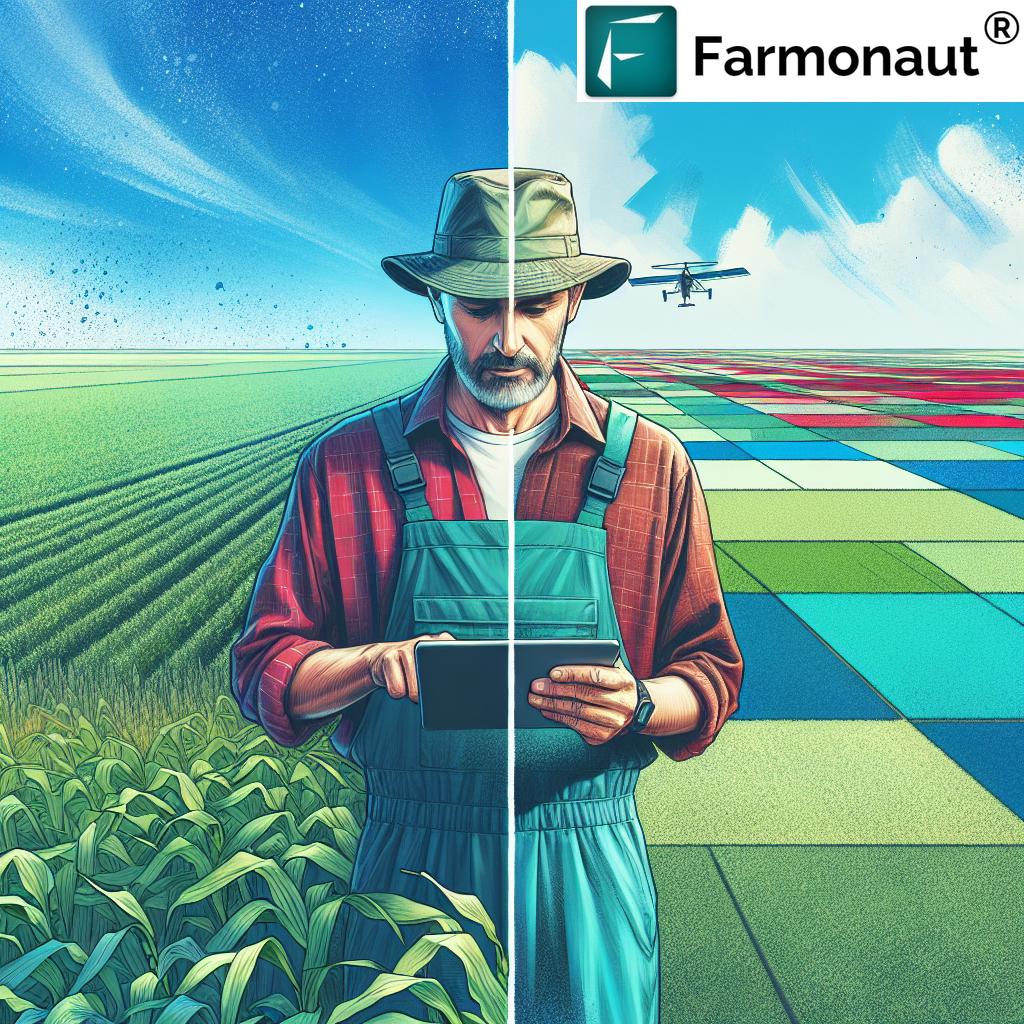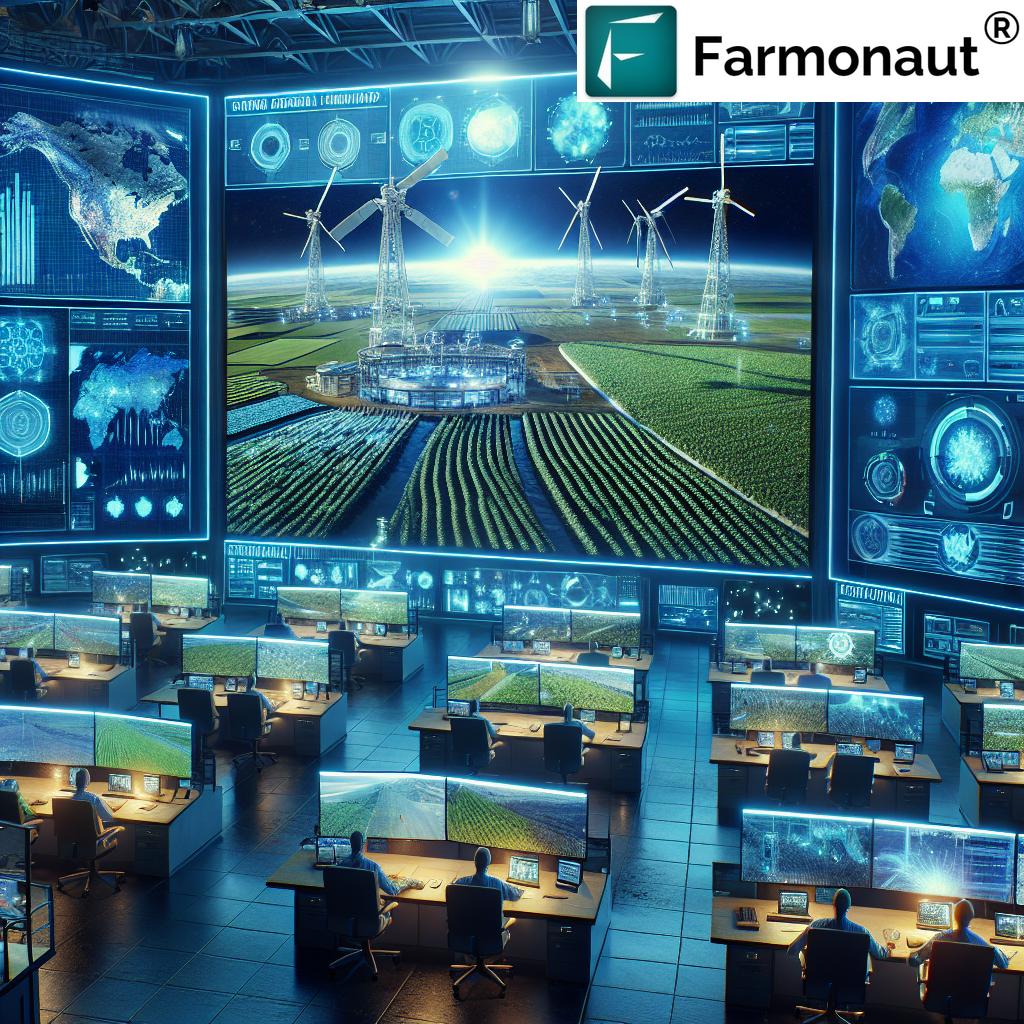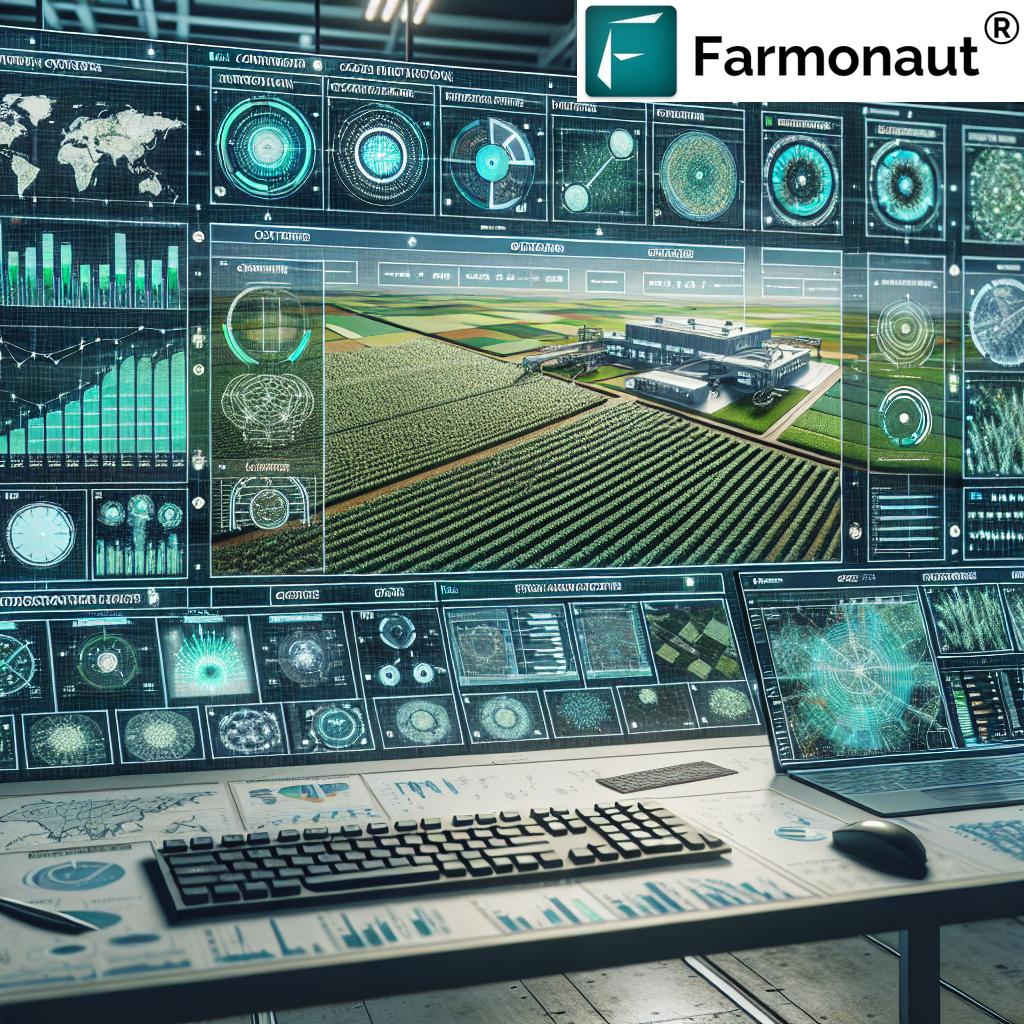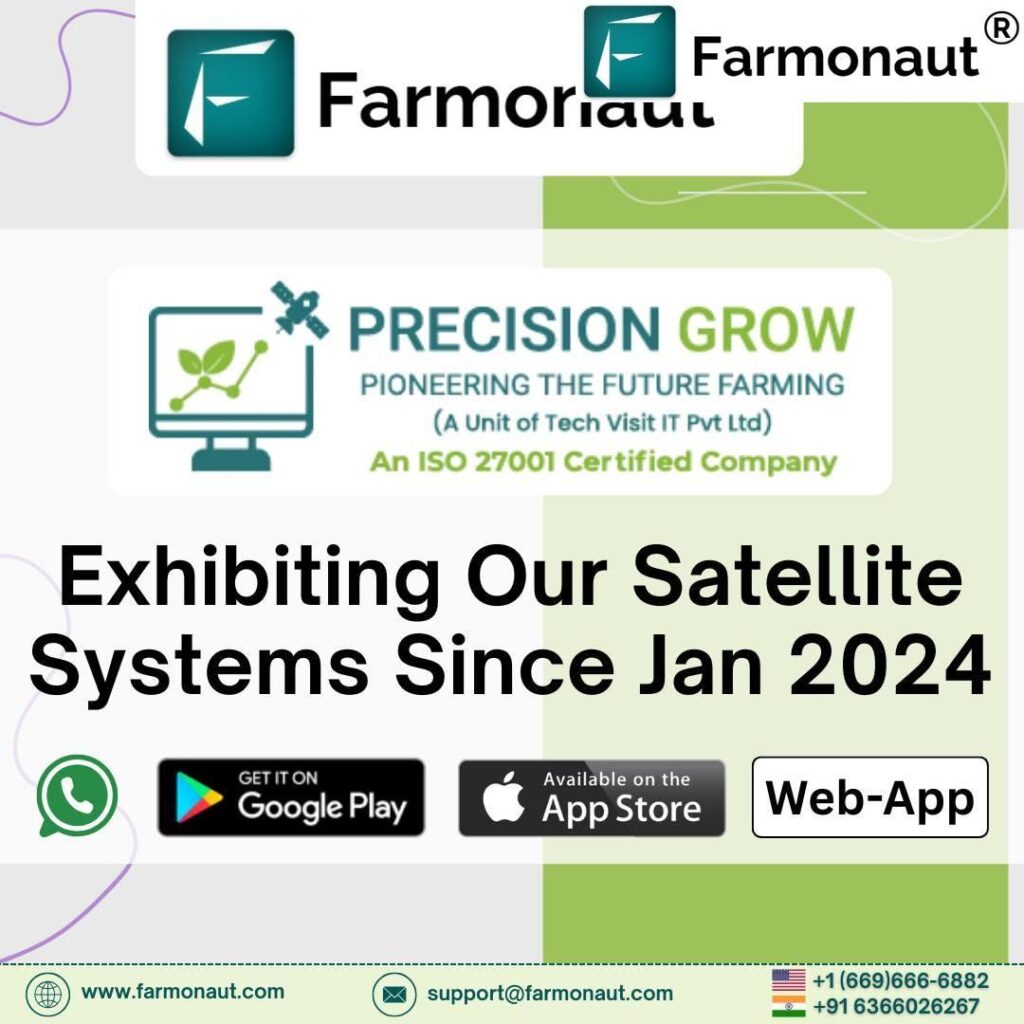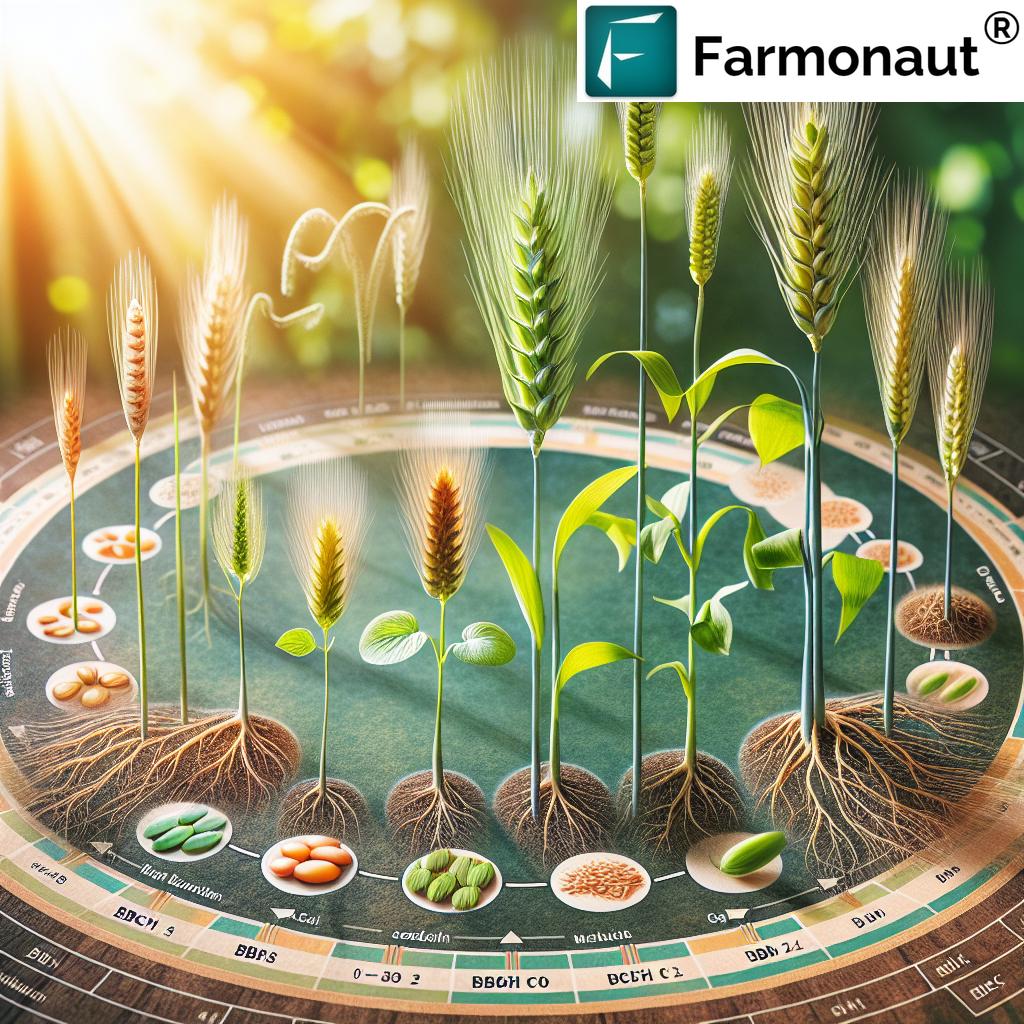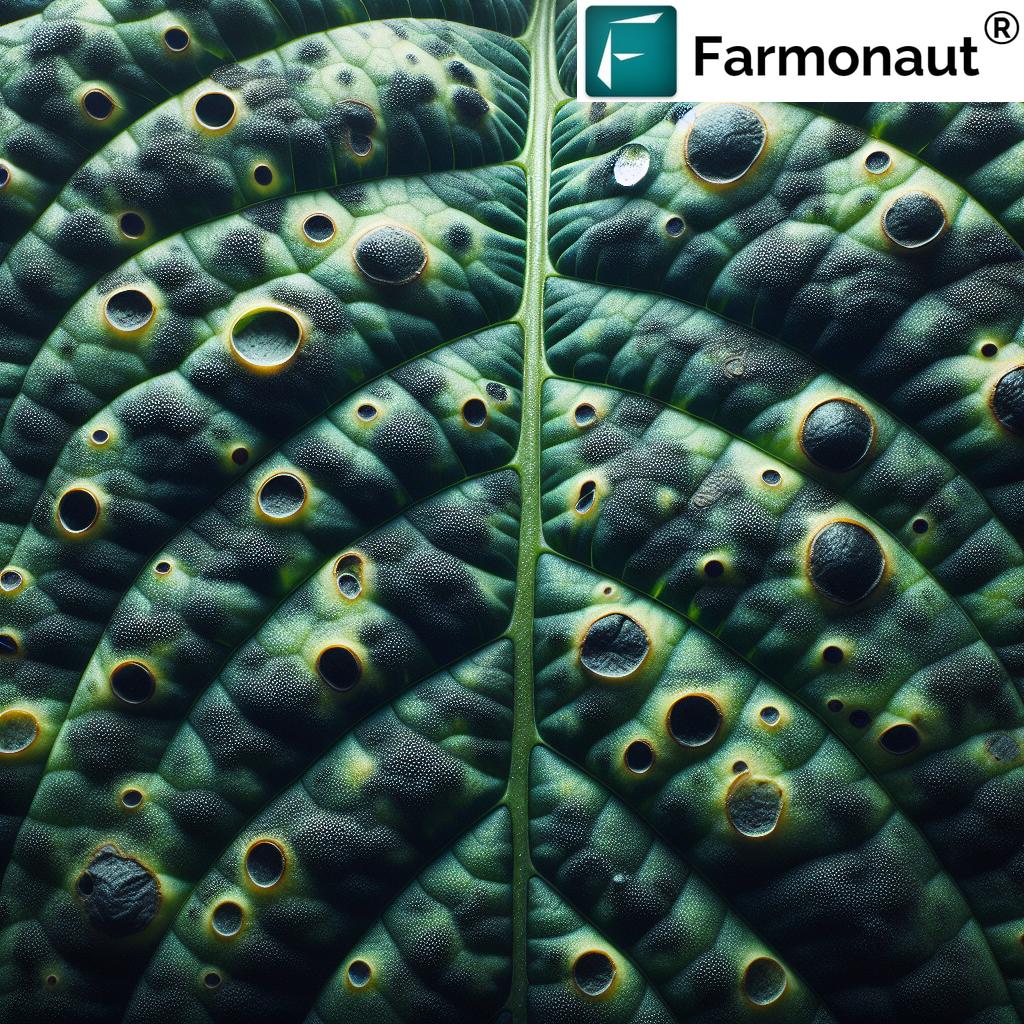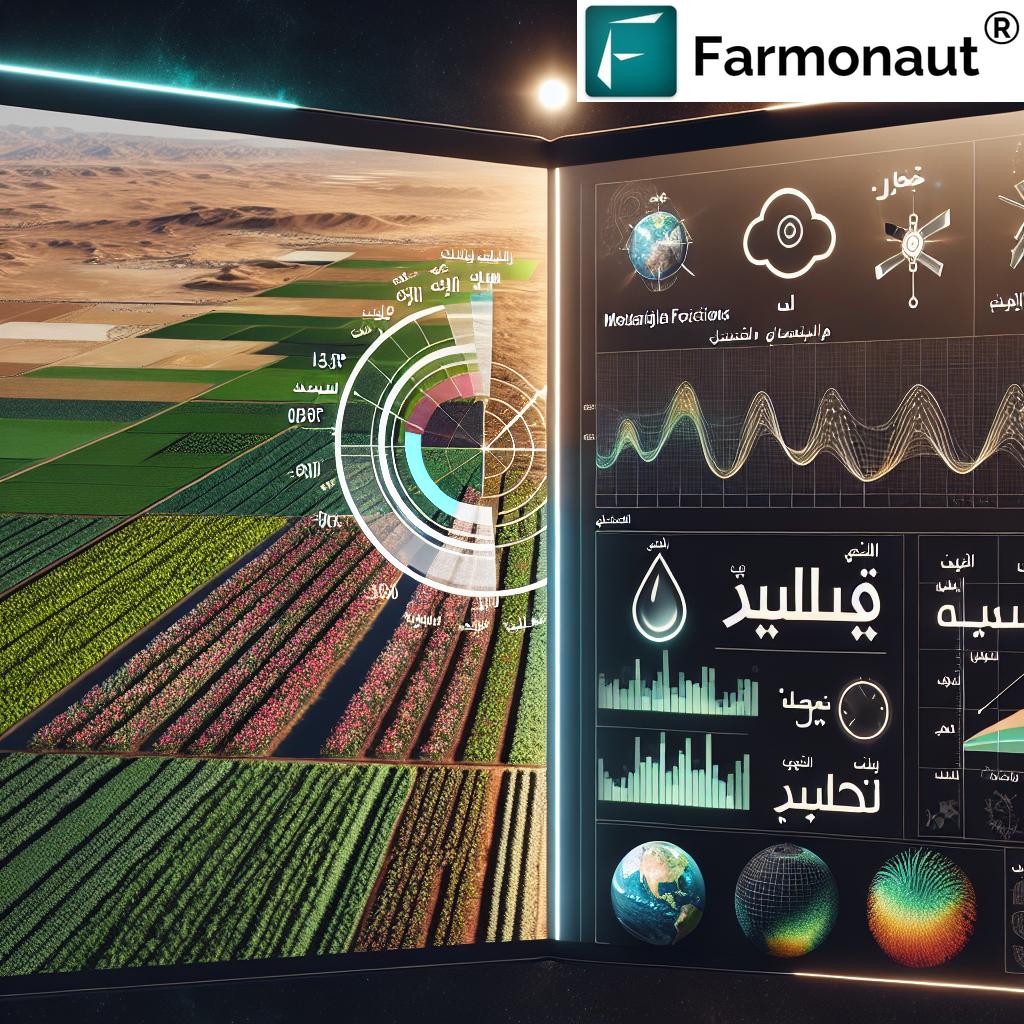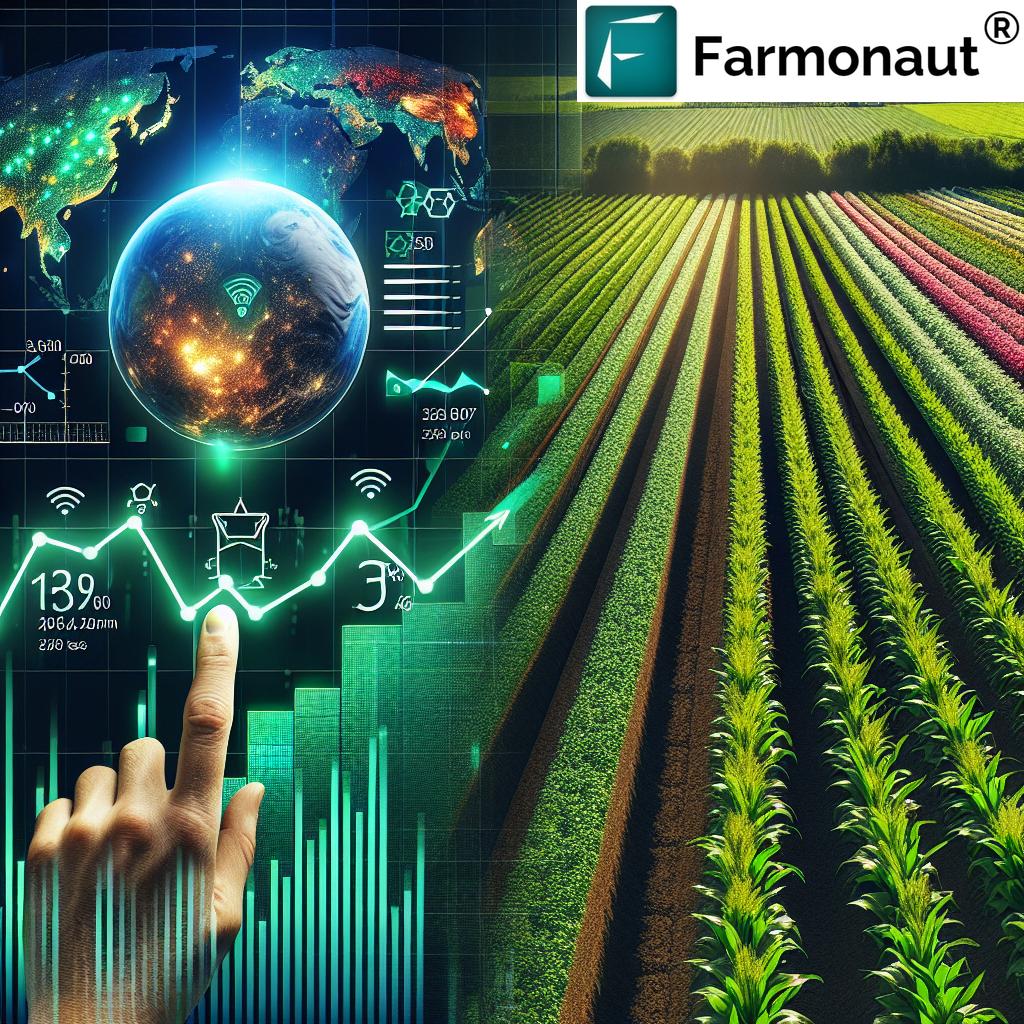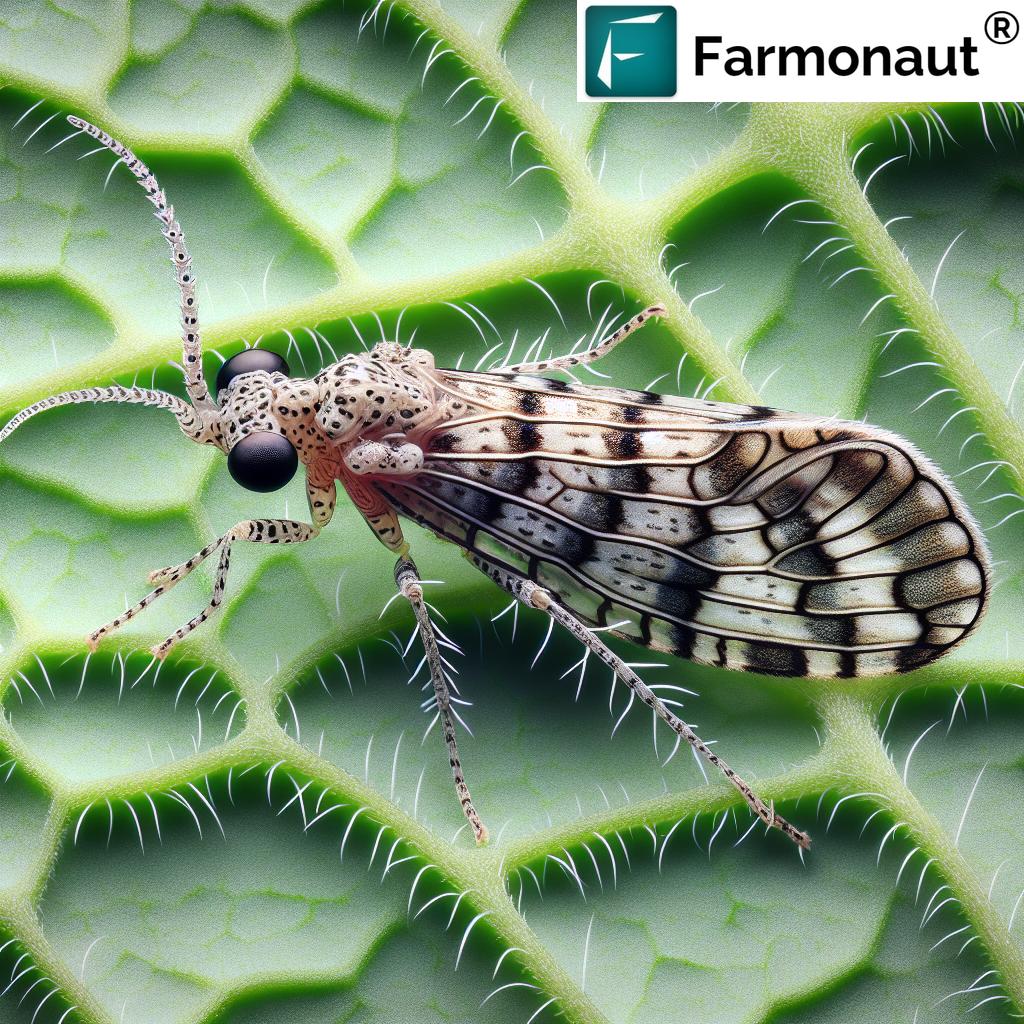Agriculture Monitoring System: 7 Shocking Yield Boosts
Meta Description: Agriculture monitoring systems supercharge yield and sustainability. Explore 7 shocking ways advanced sensors, AI, and real-time monitoring empower farmers worldwide. Discover Farmonaut’s satellite-driven, affordable precision agriculture technology!
Introduction: Agriculture Monitoring System Revolution
We stand at the forefront of an agricultural revolution powered by cutting-edge agriculture monitoring systems. Modern farming is rapidly evolving from experience-driven decisions to data-driven precision agriculture technology. What’s driving this change? The integration of sensors, satellite-based tools, AI, IoT, and advanced management systems is transforming how farmers manage, monitor, and increase their farm yield.
Agriculture monitoring systems combine a range of devices, environmental sensors, computational platforms, and analytics tools to collect, measure, analyze, and utilize real-time data on vital parameters—from soil moisture, crop health, and weather conditions to irrigation levels, pest activity, and carbon footprint.
With these agri-tech advancements, we can now make smarter, more sustainable decisions for our farms, boosting both crop productivity and environmental stewardship. Throughout this comprehensive guide, we uncover the 7 most shocking yield boosts enabled by integrated monitoring and management solutions, using the latest technologies in the field.
Components of Agriculture Monitoring Systems
At the core of effective precision agriculture technology are several interconnected monitoring components and smart environmental sensors designed to deliver actionable data for farm management. Let’s break down these elements:
- Soil Moisture Sensors: These instruments measure the volumetric water content in the soil. This is vital for precision irrigation, helping us optimize water usage, prevent plant stress, and reduce resource wastage.
By monitoring soil moisture levels, we ensure crops receive the right hydration, boosting yield while conserving water. - Temperature & Humidity Sensors: Monitoring both ambient and soil temperatures and humidity levels reveals the microclimate’s impact on crop growth. Accurate temperature and humidity readings enable us to schedule planting/harvesting times and provide early warnings for disease prevention.
- Leaf Sensors: These advanced sensors measure water deficit stress directly on plant leaves, identifying dehydration before visible symptoms appear.
- Weather Stations: Automated stations record temperature, humidity, wind speed, solar radiation, and precipitation. This information supports precise planning and prediction of farming activities.
- Nanosensors: As a leading-edge technology, nanosensors provide molecular-level monitoring of soil health, plant conditions, and pathogen detection—taking crop monitoring to the next level.
These monitoring tools, when interconnected and properly managed, form the foundation of a holistic, smart agriculture system—key to maximizing farm productivity, efficiency, and environmental sustainability.
Technological Integration: IoT, AI, and ML in Agriculture Monitoring Systems
What distinguishes today’s agriculture monitoring systems is not just the use of advanced sensors, but their seamless integration with the Internet of Things (IoT), AI, and machine learning (ML) platforms. By combining field-based instruments with robust digital analytics, we create powerful new opportunities for:
- Continuous, real-time data flow: IoT-enabled devices transmit sensor readings instantly, helping us track every fluctuation in environmental and crop conditions—whether we’re at the farm or miles away.
- Advanced analytics & decision support: AI and ML algorithms analyze massive incoming data streams to flag emerging issues, predict crop stress, optimize interventions, and even automate resource allocation.
- Farmonaut Jeevn AI Advisory System exemplifies this integration—offering personalized, satellite-powered recommendations on irrigation, fertilization, pest management, and more through accessible mobile/web apps.
- Remote Imaging: Drones and satellites capture detailed, high-resolution visuals of crop fields, enabling the early detection of pests, diseases, or nutrient deficiencies at scale.
- Blockchain Traceability & Security: By leveraging blockchain in agricultural systems, like Farmonaut’s Traceability Solution, we ensure data transparency and authenticity from farm to consumer.
The convergence of these technologies drastically improves both yield optimization and sustainability across commercial, smallholder, and government-managed farms.
7 Shocking Yield Boosts from Agriculture Monitoring Systems
Let’s deep-dive into the reasons why innovative monitoring systems are revolutionizing farming, with each application delivering high-impact, measurable yield gains:
1. Precision Irrigation with Soil Moisture Sensors
For decades, inadequate irrigation has been a top cause of yield loss across agricultural regions worldwide. With the introduction of soil moisture sensors and advanced precision irrigation tools, we can now:
- Measure real-time soil moisture levels at multiple points in the field
- Provide precise, data-driven recommendations for when and how much to irrigate
- Avoid both over-irrigation (leading to wasted water and runoff) and under-irrigation (causing drought stress and stunted crops)
Research shows that implementing soil and crop moisture monitoring can boost crop yield by 15–20% while reducing water usage by up to 30%. This is particularly game-changing for regions facing water scarcity or for farmers keen on sustainable farming practices.
Through Farmonaut’s satellite-based soil moisture assessment—delivered directly to our phones or desktops—we access historical and daily trends, empowering smarter, resource-efficient irrigation decisions.
For developers and agribusinesses, Farmonaut’s Monitoring API provides rapid access to satellite soil moisture, weather, and crop health data for integration into any management platform.
Read more or try Farmonaut Satellite Monitoring API
2. Real-Time Crop Health Monitoring & AI Advisory
The holy grail of precision agriculture technology is knowing the health of every plant at any given time. Agricultural monitoring systems, combined with satellite imagery and AI, make this possible through:
- Normalized Difference Vegetation Index (NDVI): Multispectral satellite data tracks vegetation stress, chlorophyll content, and crop vigor field-wide.
- Early detection of disease, drought, or nutrient deficiency: AI models assess field imagery, highlighting problem zones invisible to the naked eye.
- Personalized recommendations and alerts: Utilizing analytics like Farmonaut’s Jeevn AI, we get actionable suggestions for timely application of fertilizers, water, or other interventions.
With real-time crop health monitoring, we don’t wait for symptoms to become severe. Instead, we intervene early—cutting losses, boosting productivity, and optimizing every hectare.
3. Smart Pest & Disease Detection
Every year, farmers lose billions due to pests and diseases. With AI-powered agriculture monitoring systems, we bring together satellite data, real-time field sensors, and ML algorithms for:
- Early pest outbreak detection using drone and satellite multispectral images
- Automated alerts for abnormal leaf color, growth, or canopy changes (early indicators of disease or infestation)
- Targeted pest management—enabling the localized, data-driven application of pesticides only where and when needed
(This means less chemical input, healthier ecosystems, and lower costs!) - Nanosensors for real-time, in-field detection of pathogens or environmental conditions favoring pest proliferation.
Use Case: Farmonaut Crop Plantation & Forest Advisory leverages AI to identify and suggest interventions for pest and disease risks.
4. Yield Mapping with Drone & Satellite Imaging
Drones for crop monitoring and satellite remote sensing are transforming how we assess both performance and potential in every section of our fields. These advancements enable:
- High-resolution yield mapping by integrating GPS data with yield monitors—mapping soil, crop vigor, and output variability within each plot
- Farmonaut’s platform provides automated yield prediction and growth assessment using frequent satellite revisits, available even for isolated or large-scale farms
- Guided, variable-rate applications of water, fertilizer, and pest-control—according to actual crop needs
Yield mapping helps us pinpoint which practices work best (and where), optimize resource allocation, and plan future rotations for even greater efficiency.
5. Weather-Based Management & Automation
Weather dramatically impacts crop success. With IoT in agriculture and integrated weather monitoring, we can now:
- Access hyper-local, automated weather stations for real-time updates on temperature, humidity, precipitation, wind speed, and solar radiation
- Predict disease outbreaks, irrigation needs, and harvesting times with high accuracy
- Schedule farming activities (planting, spraying, harvesting) to coincide with optimal environmental conditions
Farmonaut delivers weather forecasts and insights on-the-go through its advanced platform, keeping us aligned with the changing climate and making each season more reliable.
Precision weather monitoring also supports financial security: Farmonaut’s Crop Loan & Insurance Verification helps banks validate crop conditions and provide faster, more reliable support to farmers.
6. Livestock Health Monitoring Systems
Farm management is about more than crops: advanced monitoring systems for livestock now enable:
- Real-time tracking of animal health, behavior, and reproductive status using IoT wearables
- Monitoring of barn or grazing area temperature, humidity, and air quality to reduce disease outbreaks
- Efficient, automated resource scheduling for feed, water, and medical attention
These systems boost the productivity and welfare of dairy and meat operations, minimizing labor and losses while ensuring optimal conditions for high-yield animal husbandry.
7. Sustainable Resource & Carbon Footprinting
Agriculture’s future depends on sustainability. Modern systems help us:
- Track water and chemical input usage, reducing environmental impact while maintaining or increasing yields
- Monitor carbon footprinting—measuring emissions and aligning operations with global sustainability goals
- Adopt best sustainable farming practices validated by reliable environmental monitoring
Farmonaut’s Carbon Footprinting Tool lets us assess, manage, and reduce emissions in real time, supporting both compliance and market positioning.
- Managing large farming operations or agribusiness fleets? Discover Farmonaut Fleet Management for optimal resource allocation.
- For multi-field oversight, Large Scale Farm Management by Farmonaut brings powerful analytics and reporting for every hectare under your administration.
Comparative Impact Table: Yield & Sustainability
Understanding how each monitoring technology stacks up helps us make the smartest investment and implementation choices. Here’s a side-by-side comparison:
| Technology/System | Estimated Yield Boost (%) | Sustainability Benefit | Ease of Implementation |
|---|---|---|---|
| Soil Moisture Sensors | 15–20% | Reduces water usage by 20–30%, prevents soil runoff | Moderate |
| Drone Imaging for Crop Monitoring | 10–15% | Lower chemical use, targeted pest/disease management | Advanced |
| Satellite Crop Health Monitoring | 12–18% | Minimized fertilizer input, improved yield mapping accuracy | Simple–Moderate |
| AI & ML Predictive Tools | 17–23% | Real-time intervention, resource efficiency improvement | Advanced |
| Weather Stations & Environmental Sensors | 10–13% | Synchronizes planting/harvest, reduces environmental losses | Moderate |
| Nanosensors for Pathogen Detection | 8–12% | Minimizes risks of outbreaks, supports early interventions | Advanced |
| Livestock Health Monitoring Devices | 12–18% | Increases productivity per animal, reduces disease | Moderate |
| Blockchain Traceability Systems | 6–9% | Trust & transparency, reduces losses across supply chain | Simple-Moderate |
| Fleet Resource Management | 8–12% | Lower fuel, labor, and emission output | Moderate |
How Farmonaut Is Transforming Precision Agriculture
Farmonaut stands out as a global leader in democratizing precision agriculture technology. Our mission is to make advanced, satellite-based agriculture monitoring systems both affordable and accessible across every scale of farming.
- Cutting-Edge Technology: Farmonaut integrates satellite crop health monitoring, soil moisture retrieval, weather analytics, and AI/ML-powered advisory—without the need for expensive on-field sensors.
- Real-Time Crop Health Monitoring: Access fast, accurate NDVI, moisture, and growth metrics visually mapped onto your fields—straight from our Android, iOS, and web apps.
- AI-Driven Decision Support: With Jeevn AI, receive field-specific, actionable recommendations for maximizing yield and resource efficiency.
- Blockchain-Based Product Traceability: Ensure complete transparency and data integrity for every stage of your product’s journey, building trust from farm to market.
- Resource & Fleet Management: Track assets and operations for optimal deployment, minimized downtime, and maximized profitability.
- Carbon Footprinting & Sustainability: Quantify and reduce your farm, plantation, or forestry operation’s carbon emissions, meeting global standards with ease.
Our subscription-based model means there’s an affordable plan for individual farmers, cooperatives, business managers, and even large government initiatives: on mobile, web, or as an API feed for seamless integration.
If you’re ready to start or scale your journey into data-driven, sustainable, and precision farming, discover Farmonaut’s powerful tools and intuitive user experience—no matter your farm’s size, crop, or geolocation.
Challenges & Considerations for Implementing Monitoring Systems
It’s clear the benefits of agricultural monitoring systems are immense, but deploying these technologies requires careful consideration of potential challenges:
- Initial Costs: While long-term savings and yield boosts are significant, upfront investment in sensors, connectivity, and management infrastructure may be a barrier for some—especially smallholder farmers. Farmonaut’s satellite-based solutions help reduce this need for hardware investment.
- Connectivity Issues: Many rural areas still struggle with consistent internet access, making real-time IoT and data analytics challenging. Flexible access through mobile apps and offline processing is a must.
- Data Handling & Expertise: Interpreting large volumes of data for actionable insight requires robust software and some digital literacy. Agricultural extension services and intuitive platforms like Farmonaut are bridging this gap.
- Privacy & Security: Keeping sensitive farm data secure from unauthorized access demands modern data protection protocols. The rise of blockchain-based traceability offers strong, transparent safeguards.
Smart implementation, vendor selection, and training are critical steps to unlocking the full value of your agriculture monitoring investment.
Future Trends in Agriculture Monitoring Systems
- Enhanced AI & ML Capabilities: Fine-tuned, field-specific models will offer automated diagnosis and prescription for every possible stress—from nutrient deficiencies to climate adaptation strategies.
- Affordable, Compact Sensors: Ongoing R&D will put more powerful environmental sensors for agriculture into the hands of even the smallest producers.
- Blockchain-Driven Data Management: Expect transparent, tamper-proof record keeping on inputs, activities, yield, and emission—all accessible through platforms like Farmonaut.
- Holistic Sustainability: Smart platforms will seamlessly manage soil, crop, water, and environmental metrics, enabling compliance with global sustainability standards right from your farm dashboard.
Our journey is only beginning. Every new sensor, algorithm, or integration brings us closer to the goal of nourishing the world—sustainably, efficiently, and profitably.
Farmonaut Subscription Options
Join farmers, agribusinesses, governments, and organizations worldwide using Farmonaut’s subscription-based, scalable farm management services. Choose from flexible plans—customized for individual use, cooperatives, and large commercial entities. Enjoy affordable access to satellite monitoring, AI advisory, blockchain traceability, and resource management.
Frequently Asked Questions: Agriculture Monitoring Systems & Farmonaut
What is an agriculture monitoring system?
An agriculture monitoring system is a set of technologies—including environmental sensors, satellite imagery, AI, and digital platforms—used to collect and analyze data on crop, soil, and environmental parameters, empowering farmers to make informed decisions that enhance yield, sustainability, and efficiency.
How do soil moisture sensors improve crop yield?
Soil moisture sensors provide accurate, real-time data on how much water is available to plants. This enables precision irrigation—delivering water exactly when and where needed—preventing both over- and under-irrigation, cutting costs, optimizing growth, and increasing yield.
How does Farmonaut differ from traditional precision agriculture?
Unlike traditional systems reliant on expensive hardware, Farmonaut leverages satellite imagery and AI-based analytics to provide affordable, scalable precision agriculture technology for anyone—no matter the farm size or infrastructure.
What are the main benefits of real-time crop health monitoring?
- Early detection of stress, disease, or pest outbreaks—before they impact yield
- Targeted, efficient application of fertilizers and treatments
- Optimized resource usage (water, inputs, labor), increasing profit and reducing environmental impact
Can smallholder farmers afford these technologies?
Yes! Farmonaut makes precision agriculture accessible via affordable subscriptions, eliminating high hardware costs and providing user-friendly mobile/web access.
What role does blockchain play in agriculture monitoring?
Blockchain secures, verifies, and traces every data point from farm to consumer—ensuring product authenticity, food safety, and trustworthy supply chains. See Farmonaut’s Traceability solution for more details.
How can I integrate Farmonaut data with my own software?
Farmonaut provides a comprehensive API and Developer Documentation for seamless integration of satellite and weather data into your platforms.
Is Farmonaut only for crops, or does it support forestry and livestock?
Farmonaut’s platform supports monitoring for crops, plantation, forestry, and resource management spanning a range of agricultural and environmental applications.
Conclusion: The Age of Smart Agriculture
Agriculture monitoring systems represent a true paradigm shift for modern farming. By integrating environmental sensors, satellite technology, AI, and blockchain-driven insights, we empower every farmer, agribusiness, and planner to unlock new levels of productivity, sustainability, and efficiency.
Farmonaut stands at the forefront of this revolution—democratizing access, lowering barriers, and making it simple to get started. Whether you grow a few acres or manage thousands of hectares, the right monitoring solutions deliver measurable yield boosts, lower costs, and a healthier planet.
Ready to start? Experience the future of data-driven farming. Try Farmonaut today!







